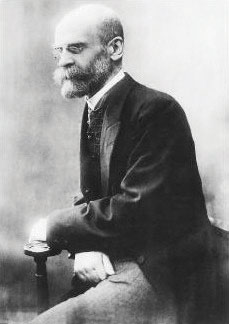what does it mean to have continuity and change what are some different types of conflict
one.2 Sociological Perspectives on Social Problems
Learning Objectives
- Define the sociological imagination.
- Explicate what is meant past the blaming-the-victim belief.
- Summarize the most important beliefs and assumptions of functionalism and disharmonize theory.
- Summarize the virtually important behavior and assumptions of symbolic interactionism and substitution theory.
The sociological understanding of social problems rests heavily on the concept of the sociological imagination. We discuss this concept in some detail before turning to various theoretical perspectives that provide a further context for understanding social problems.
The Sociological Imagination
Many individuals experience ane or more social problems personally. For case, many people are poor and unemployed, many are in poor health, and many have family problems, drink too much alcohol, or commit crime. When we hear nigh these individuals, it is easy to think that their problems are theirs alone, and that they and other individuals with the same problems are entirely to blame for their difficulties.
Folklore takes a different arroyo, as it stresses that individual problems are often rooted in problems stemming from aspects of society itself. This key insight informed C. Wright Mills's (1959) (Mills, 1959) archetype distinction between personal troubles and public bug. Personal troubles refer to a problem affecting individuals that the affected individual, too as other members of gild, typically blame on the individual's own personal and moral failings. Examples include such different issues equally eating disorders, divorce, and unemployment. Public issues, whose source lies in the social construction and culture of a gild, refer to social issues affecting many individuals. Problems in order thus help business relationship for problems that individuals experience. Mills felt that many issues commonly considered individual troubles are best understood as public issues, and he coined the term sociological imagination to refer to the ability to appreciate the structural ground for individual bug.
To illustrate Mills's viewpoint, let's use our sociological imaginations to understand some contemporary social issues. We volition start with unemployment, which Mills himself discussed. If only a few people were unemployed, Mills wrote, we could reasonably explain their unemployment past maxim they were lazy, lacked good work habits, and so forth. If so, their unemployment would exist their own personal trouble. But when millions of people are out of work, unemployment is best understood as a public issue considering, as Mills (Mills, 1959) put it, "the very structure of opportunities has collapsed. Both the correct argument of the trouble and the range of possible solutions require u.s.a. to consider the economic and political institutions of the guild, and not merely the personal situation and grapheme of a besprinkle of individuals."

When merely a few people are out of work, it is fair to say that their unemployment is their personal trouble. Yet, when millions of people are out of piece of work, as has been true since the economic downturn began in 2008, this massive unemployment is more than accurately viewed as a public issue. Every bit such, its causes lie non in the unemployed individuals merely rather in our society's economic and social systems.
The high US unemployment rate stemming from the severe economic downturn that began in 2008 provides a telling example of the point Mills was making. Millions of people lost their jobs through no error of their ain. While some individuals are undoubtedly unemployed considering they are lazy or lack good piece of work habits, a more structural explanation focusing on lack of opportunity is needed to explicate why so many people were out of work. If then, unemployment is best understood as a public consequence rather than a personal trouble.
Another social problem is eating disorders. We usually consider a person's eating disorder to be a personal trouble that stems from a lack of command, low self-esteem, or another personal problem. This caption may be OK equally far equally information technology goes, but information technology does not help us empathise why so many people have the personal problems that lead to eating disorders. Possibly more important, this belief also neglects the larger social and cultural forces that assist explain such disorders. For example, near Americans with eating disorders are women, not men. This gender difference forces us to enquire what it is about existence a woman in American society that makes eating disorders so much more common. To begin to respond this question, nosotros need to look to the standard of dazzler for women that emphasizes a slender body (Boyd, et. al., 2011). If this cultural standard did not exist, far fewer American women would suffer from eating disorders than do at present. Because it does be, even if every daughter and woman with an eating disorder were cured, others would take their places unless nosotros could somehow alter this standard. Viewed in this way, eating disorders are best understood equally a public issue, not but equally a personal trouble.
Picking up on Mills's insights, William Ryan (1976) (Ryan, 1976) pointed out that Americans typically think that social problems such every bit poverty and unemployment stalk from personal failings of the people experiencing these issues, not from structural problems in the larger society. Using Mills's terms, Americans tend to recall of social problems as personal troubles rather than public issues. As Ryan put it, they tend to believe in blaming the victim rather than blaming the system.
To help us understand a blaming-the-victim ideology, let'due south consider why poor children in urban areas often acquire very piffling in their schools. According to Ryan, a blaming-the-victim arroyo would say the children'southward parents practise not intendance about their learning, fail to teach them good study habits, and do not encourage them to take school seriously. This blazon of explanation, he wrote, may apply to some parents, but it ignores a much more important reason: the sad shape of America's urban schools, which, he said, are overcrowded, decrepit structures housing old textbooks and out-of-date equipment. To improve the schooling of children in urban areas, he wrote, nosotros must meliorate the schools themselves and not just endeavour to "ameliorate" the parents.
Every bit this example suggests, a blaming-the-victim approach points to solutions to social problems such as poverty and illiteracy that are very different from those suggested by a more structural approach that blames the system. If we blame the victim, nosotros would spend our limited dollars to address the personal failings of individuals who suffer from poverty, illiteracy, poor wellness, eating disorders, and other difficulties. If instead nosotros blame the organization, nosotros would focus our attending on the various social weather condition (decrepit schools, cultural standards of female dazzler, and the like) that business relationship for these difficulties. A sociological understanding suggests that the latter arroyo is ultimately needed to help us bargain successfully with the social bug facing us today.
Theoretical Perspectives
Three theoretical perspectives guide sociological thinking on social issues: functionalist theory, disharmonize theory, and symbolic interactionist theory. These perspectives look at the aforementioned social bug, but they do and then in different ways. Their views taken together offer a fuller understanding of social issues than any of the views can offer alone. Table 1.1 "Theory Snapshot" summarizes the three perspectives.
Tabular array 1.one Theory Snapshot
| Theoretical perspective | Major assumptions | Views of social bug |
|---|---|---|
| Functionalism | Social stability is necessary for a potent society, and adequate socialization and social integration are necessary for social stability. Order's social institutions perform important functions to help ensure social stability. Boring social change is desirable, but rapid social change threatens social lodge. | Social problems weaken a social club's stability merely do not reverberate fundamental faults in how the gild is structured. Solutions to social problems should have the form of gradual social reform rather than sudden and far-reaching change. Despite their negative effects, social issues oftentimes also serve important functions for society. |
| Disharmonize theory | Club is characterized by pervasive inequality based on social form, race, gender, and other factors. Far-reaching social change is needed to reduce or eliminate social inequality and to create an egalitarian society. | Social problems ascend from cardinal faults in the structure of a society and both reflect and reinforce inequalities based on social class, race, gender, and other dimensions. Successful solutions to social bug must involve far-reaching change in the structure of society. |
| Symbolic interactionism | People construct their roles as they collaborate; they do not merely learn the roles that society has set out for them. As this interaction occurs, individuals negotiate their definitions of the situations in which they notice themselves and socially construct the reality of these situations. In so doing, they rely heavily on symbols such every bit words and gestures to reach a shared understanding of their interaction. | Social issues arise from the interaction of individuals. People who appoint in socially problematic behaviors often learn these behaviors from other people. Individuals likewise acquire their perceptions of social problems from other people. |
Functionalism
Functionalism, also known as the functionalist theory or perspective, arose out of 2 great revolutions of the eighteenth and nineteenth centuries. The outset was the French Revolution of 1789, whose intense violence and bloody terror shook Europe to its core. The aristocracy throughout Europe feared that revolution would spread to their ain lands, and intellectuals feared that social order was crumbling.
The Industrial Revolution of the nineteenth century reinforced these concerns. Starting beginning in Europe and so in the Usa, the Industrial Revolution led to many changes, including the ascent and growth of cities as people left their farms to live well-nigh factories. As the cities grew, people lived in increasingly poor, crowded, and bedraggled conditions, and crime was rampant. Here was additional prove, if European intellectuals needed information technology, of the breakup of social lodge.
In response, the intellectuals began to write that a strong social club, as exemplified by strong social bonds and rules and effective socialization, was needed to prevent social gild from disintegrating. Without a strong gild and effective socialization, they warned, social gild breaks downward, and violence and other signs of social disorder result.
This general framework reached fruition in the writings of Émile Durkheim (1858–1917), a French scholar largely responsible for the sociological perspective, as we now know it. Adopting the bourgeois intellectuals' view of the need for a potent society, Durkheim felt that human beings take desires that result in anarchy unless social club limits them (Durkheim, 1952). Information technology does and so, he wrote, through 2 related social mechanisms: socialization and social integration. Socialization helps us learn society's rules and the need to cooperate, as people finish up mostly agreeing on important norms and values, while social integration, or our ties to other people and to social institutions such as faith and the family, helps socialize united states of america and integrate us into society and reinforce our respect for its rules.
Today's functionalist perspective arises out of Durkheim'south work and that of other conservative intellectuals of the nineteenth century. It uses the human torso equally a model for understanding society. In the homo body, our various organs and other torso parts serve important functions for the ongoing wellness and stability of our body. Our eyes help united states encounter, our ears aid united states of america hear, our heart circulates our blood, and so along. Just as we can understand the body past describing and understanding the functions that its parts serve for its health and stability, so tin nosotros understand club by describing and understanding the functions that its parts—or, more than accurately, its social institutions—serve for the ongoing health and stability of society. Thus functionalism emphasizes the importance of social institutions such as the family, organized religion, and education for producing a stable society.

Émile Durkheim was a founder of folklore and is largely credited with developing the functionalist perspective.
Like to the view of the conservative intellectuals from which it grew, functionalism is skeptical of rapid social change and other major social upheaval. The illustration to the homo body helps us understand this skepticism. In our bodies, any sudden, rapid change is a sign of danger to our health. If we break a bone in 1 of our legs, we have trouble walking; if we lose sight in both our optics, we tin can no longer see. Slow changes, such as the growth of our pilus and our nails, are fine and even normal, but sudden changes similar those simply described are obviously troublesome. By analogy, sudden and rapid changes in society and its social institutions are troublesome according to the functionalist perspective. If the human trunk evolved to its present form and functions considering these made sense from an evolutionary perspective, so did guild evolve to its present grade and functions because these made sense. Any sudden change in society thus threatens its stability and time to come.
As these comments might suggest, functionalism views social problems as arising from society'southward natural evolution. When a social problem does occur, information technology might threaten a society's stability, but it does not mean that key flaws in the social club exist. Accordingly, gradual social reform should be all that is needed to address the social trouble.
Functionalism fifty-fifty suggests that social issues must be functional in some ways for society, because otherwise these problems would not continue. This is certainly a controversial suggestion, only it is true that many social issues do serve important functions for our social club. For example, crime is a major social problem, but information technology is also good for the economic system because information technology creates hundreds of thousands of jobs in law enforcement, courts and corrections, abode security, and other sectors of the economy whose major role is to deal with offense. If crime disappeared, many people would be out of piece of work! Similarly, poverty is also a major social trouble, simply one function that poverty serves is that poor people practice jobs that otherwise might non get done considering other people would not want to practice them (Gans, 1972). Similar crime, poverty also provides employment for people across the nation, such as those who piece of work in social service agencies that assistance poor people.
Conflict Theory
In many ways, conflict theory is the opposite of functionalism but ironically too grew out of the Industrial Revolution, thanks largely to Karl Marx (1818–1883) and his collaborator, Friedrich Engels (1820–1895). Whereas conservative intellectuals feared the mass violence resulting from industrialization, Marx and Engels deplored the conditions they felt were responsible for the mass violence and the capitalist lodge they felt was responsible for these conditions. Instead of fearing the breakup of social guild that mass violence represented, they felt that revolutionary violence was needed to eliminate capitalism and the poverty and misery they saw as its inevitable results (Marx, 1906; Marx & Engels, 1962).
According to Marx and Engels, every society is divided into two classes based on the ownership of the ways of product (tools, factories, and the like). In a capitalist society, the bourgeoisie, or ruling class, owns the means of production, while the proletariat, or working class, does not own the means of production and instead is oppressed and exploited by the bourgeoisie. This departure creates an automated disharmonize of interests between the two groups. Merely put, the bourgeoisie is interested in maintaining its position at the meridian of social club, while the proletariat'south interest lies in rising up from the bottom and overthrowing the bourgeoisie to create an egalitarian society.
In a capitalist society, Marx and Engels wrote, revolution is inevitable considering of structural contradictions arising from the very nature of capitalism. Because turn a profit is the main goal of capitalism, the bourgeoisie's involvement lies in maximizing profit. To exercise so, capitalists effort to keep wages as low as possible and to spend equally piffling coin every bit possible on working conditions. This cardinal fact of commercialism, said Marx and Engels, eventually prompts the rise of course consciousness, or an awareness of the reasons for their oppression, amidst workers. Their course consciousness in turn leads them to revolt against the bourgeoisie to eliminate the oppression and exploitation they endure.
Marx and Engels' view of disharmonize arising from unequal positions held by members of order lies at the heart of today's conflict theory. This theory emphasizes that different groups in club have different interests stemming from their different social positions. These different interests in turn lead to unlike views on important social issues. Some versions of the theory root conflict in divisions based on race and ethnicity, gender, and other such differences, while other versions follow Marx and Engels in seeing disharmonize arising out of dissimilar positions in the economic construction. In general, withal, conflict theory emphasizes that the diverse parts of society contribute to ongoing inequality, whereas functionalist theory, every bit nosotros take seen, stresses that they contribute to the ongoing stability of guild. Thus while functionalist theory emphasizes the benefits of the various parts of social club for ongoing social stability, disharmonize theory favors social change to reduce inequality.

Karl Marx and his collaborator Friedrich Engels were intense critics of capitalism. Their work inspired the after evolution of conflict theory in folklore.
Feminist theory has developed in sociology and other disciplines since the 1970s and for our purposes will be considered a specific application of disharmonize theory. In this case, the conflict concerns gender inequality rather than the class inequality emphasized by Marx and Engels. Although many variations of feminist theory be, they all emphasize that society is filled with gender inequality such that women are the subordinate sexual activity in many dimensions of social, political, and economical life (Lorber, 2010). Liberal feminists view gender inequality every bit arising out of gender differences in socialization, while Marxist feminists say that this inequality is a result of the rising of capitalism, which fabricated women dependent on men for economic support. On the other hand, radical feminists view gender inequality as nowadays in all societies, not just capitalist ones. Several chapters in this volume emphasize the perspectives of feminist sociologists and other social scientists.
Conflict theory in its various forms views social problems every bit arising from guild's inherent inequality. Depending on which version of disharmonize theory is being considered, the inequality contributing to social issues is based on social class, race and ethnicity, gender, or some other dimension of lodge'due south hierarchy. Considering whatever of these inequalities represents a fundamental flaw in society, conflict theory assumes that fundamental social alter is needed to address club's many social problems.
Symbolic Interactionism
Symbolic interactionism focuses on the interaction of individuals and on how they interpret their interaction. Its roots prevarication in the work of early 1900s American sociologists, social psychologists, and philosophers who were interested in human consciousness and activeness. Herbert Blumer (1969) (Blumer, 1969), a sociologist at the Academy of Chicago, congenital on their writings to develop symbolic interactionism, a term he coined. Cartoon on Blumer's work, symbolic interactionists experience that people exercise not merely learn the roles that society has set out for them; instead they construct these roles every bit they interact. As they collaborate, they negotiate their definitions of the situations in which they discover themselves and socially construct the reality of these situations. In doing so, they rely heavily on symbols such equally words and gestures to accomplish a shared understanding of their interaction.

Symbolic interactionism focuses on individuals, such every bit the people conversing here. Sociologists favoring this approach examine how and why individuals interact and translate the meanings of their interaction.
An case is the familiar symbol of shaking hands. In the United states of america and many other societies, shaking hands is a symbol of greeting and friendship. This unproblematic deed indicates that you are a dainty, polite person with whom someone should experience comfortable. To reinforce this symbol's importance for understanding a bit of interaction, consider a situation where someone refuses to shake easily. This activeness is usually intended as a sign of dislike or equally an insult, and the other person interprets it equally such. Their agreement of the state of affairs and subsequent interaction will be very different from those arising from the more typical shaking of hands. Every bit the term symbolic interactionism implies, their agreement of this meet arises from what they do when they interact and from their use and interpretation of the various symbols included in their interaction. Co-ordinate to symbolic interactionists, social gild is possible considering people acquire what various symbols (such as shaking easily) mean and apply these meanings to unlike kinds of situations. If you visited a society where sticking your right hand out to greet someone was interpreted every bit a threatening gesture, y'all would rapidly acquire the value of common understandings of symbols.
Symbolic interactionism views social bug as arising from the interaction of individuals. This interaction matters in 2 important respects. Starting time, socially problematic behaviors such as crime and drug use are oftentimes learned from our interaction with people who engage in these behaviors; we adopt their attitudes that justify committing these behaviors, and we acquire any special techniques that might be needed to commit these behaviors. Second, nosotros besides learn our perceptions of a social problem from our interaction with other people, whose perceptions and behavior influence our ain perceptions and beliefs.
Because symbolic interactionism emphasizes the perception of social problems, information technology is closely aligned with the social constructionist view discussed earlier. Both perspectives emphasize the subjective nature of social problems. By doing and so, they remind u.s.a. that perceptions often matter at least as much as objective reality in determining whether a given status or behavior rises to the level of a social problem and in the types of possible solutions that various parties might favor for a particular social trouble.
Applying the Three Perspectives

To explicate armed robbery, symbolic interactionists focus on how armed robbers decide when and where to rob a victim and on how their interactions with other criminals reinforce their ain criminal tendencies.
To assistance yous farther sympathize the different views of these three theoretical perspectives, let'southward see what they would probably say about armed robbery, a very serious course of criminal offense, while recognizing that the iii perspectives together provide a more than comprehensive understanding of armed robbery than whatever i perspective provides past itself.
A functionalist approach might advise that armed robbery actually serves positive functions for gild, such as the chore-creating function mentioned before for crime in general. It would still think that efforts should be made to reduce armed robbery, but it would also assume that far-reaching changes in our guild would be neither wise nor necessary as office of the endeavor to reduce crime.
Conflict theory would accept a very different approach to agreement armed robbery. It might note that most street criminals are poor and thus emphasize that armed robbery is the result of the despair and frustration of living in poverty and facing a lack of jobs and other opportunities for economical and social success. The roots of street offense, from the perspective of disharmonize theory, thus prevarication in society at least as much as they lie in the individuals committing such crime. To reduce armed robbery and other street criminal offense, disharmonize theory would advocate far-reaching changes in the economic structure of society.
For its role, symbolic interactionism would focus on how armed robbers make such decisions as when and where to rob someone and on how their interactions with other criminals reinforce their own criminal tendencies. Information technology would also investigate how victims of armed robbery behave when confronted by a robber. To reduce armed robbery, it would abet programs that reduce the opportunities for interaction amongst potential criminal offenders, for case, afterwards-school programs that keep at-hazard youths decorated in "conventional" activities so that they have less time to spend with youths who might help them go into trouble.
Fundamental Takeaways
- According to C. Wright Mills, the sociological imagination involves the ability to recognize that private troubles are rooted in public bug and structural problems.
- Functionalism emphasizes the importance of social institutions for social stability and implies that far-reaching social change will be socially harmful.
- Conflict theory emphasizes social inequality and suggests that far-reaching social change is needed to achieve a simply society.
- Symbolic interactionism emphasizes the social meanings and understandings that individuals derive from their social interaction.
For Your Review
- Select an case of a "private trouble" and explicate how and why it may reverberate a structural problem in society.
- At this point in your study of social problems, which 1 of the 3 sociological theoretical perspectives sounds most highly-seasoned to you? Why?
References
Blumer, H. (1969). Symbolic interactionism: Perspective and Method. Englewood Cliffs, NJ: Prentice Hall.
Boyd, E. M., Reynolds, J. R., Tillman, Grand. H., & Martin, P. Y. (2011). Adolescent girls' race/ethnic status, identities, and drive for thinness. Social Science Inquiry, twoscore(2), 667–684.
Durkheim, É. (1952). Suicide (J. Spaulding & G. Simpson, Trans.). New York, NY: Complimentary Press. (Original work published 1897).
Gans, H. J. (1972). The positive functions of poverty. American Journal of Folklore, 78, 275–289.
Lorber, J. (2010). Gender Inequality: Feminist Theories and Politics. New York, NY: Oxford Academy Press.
Marx, K. (1906). Capital. New York, NY: Random Business firm. (Original work published 1867).
Marx, Yard., & Engels, F. (1962). The communist manifesto. In Marx and Engels: Selected works (Vol. 2, pp. 21–65). Moscow, Russia: Strange Linguistic communication Publishing Firm. (Original work published 1848).
Mills, C. W. (1959). The sociological imagination. London, United Kingdom: Oxford University Press.
Ryan, W. (1976). Blaming the victim (Rev. ed.). New York, NY: Vintage Books.
burnsidetherm1984.blogspot.com
Source: https://open.lib.umn.edu/socialproblems/chapter/1-2-sociological-perspectives-on-social-problems/
Post a Comment for "what does it mean to have continuity and change what are some different types of conflict"